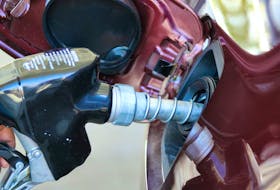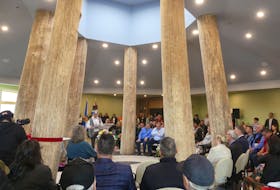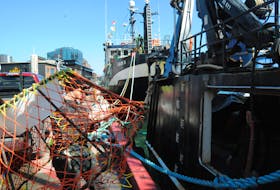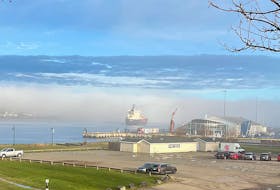COME BY CHANCE, N.L. — If everything goes according to plan, North Atlantic Refining Ltd. (NARL) could be rolling out two major construction projects at its refinery in Come By Chance in the next two years.
The refinery, located near the Town of Come By Chance in Placentia Bay, sits just two-and-a-half kilometres from the Whiffen Head Newfoundland Transshipment Limited (NTL) terminal.
The plan is to build an over-land pipeline to connect the refinery to the tanks at the transshipment terminal.
And that connection could open up many more opportunities for the oil refinery in the future, NARL CEO Thomas Jenke told The Packet in an interview Nov. 1.
“The idea of having a connective line between the NTL terminal and us is actually a pretty old one,” said Jenke. “And personally, I’m wondering why it never really materialized because it’s actually very obvious that to have a connection between the two would be beneficial for all parties involved.”
While the term “pipeline” is typically for long-distance transfer with certain connotations, Jenke says the very short distance of only two-and-half kilometres makes the transfer a simple connection by comparison.
“We are nowhere near that dimension.”
Jenke says the discussions for a connective line over the area began earlier this year.
Currently, crude oil shipments are supplied by vessels at the Come By Chance refinery jetty, unloading into their own crude tanks.
At the Whiffen Head transshipment terminal, Hibernia crude is offloaded from tankers into storage containers, then eventually transferred to larger tankers for shipping to market.
A pipeline would allow the local refinery to tap into the Whiffen Head tanks to get Grand Banks crude for processing at the refinery.
Those commercial agreements would still have to be negotiated with NTL and their shareholders, says Jenke.
“From an engineering perspective…as soon as the commercial agreements are in place, we will be starting the construction. I expect that to materialize in the course of 2020.”
He expects the pipeline to cost about $8 million, with need for local labour, including welders and pipefitters.
Other projects
The connecting line project is one of several other NARL projects to increase productivity.
As detailed in a recent environmental assessment bulletin release by the provincial Department of Municipal Affairs and Environment, the refinery’s delayed coker project is also moving along.
That project will be reviewed by an environmental assessment committee made up of representatives from provincial and federal governments and agencies, including environment departments, Health Canada, and the Department of Advanced Education, to name a few.
That committee will provide scientific and technical advice for an environmental preview report (EPR).
The coker project itself will produce petroleum coke, reducing sulfur concentration in the crude oil. Jenke previously told SaltWire Media they plan to produce “green coke” for use in electrodes, the main demand for aluminum smelters.
The production of locally-refined coke will create a new revenue stream for the refinery, he added.
If the project passes the environmental assessment process, the company is looking at construction as early as 2021, with production by 2022.
In addition, NARL plans an “efficiency and flexibility project,” which had also been appointed an environmental assessment committee by the Department of Municipal Affairs and Environment.
Jenke says this will increase the throughput capacity in two steps.
Currently operating at 130,000 barrels daily throughput, phase one would see this increase to 140,000-145,000 barrels by mid-2020.
In 2021, phase two would see it increase to about 165,000 barrels per day.
Jenke says these production increases would actually make the Come By Chance Refinery the fourth largest oil refinery in Canada.
He calls it a substantial increase, especially considering that less than five years ago the refinery operated at 95,000 barrels per day.
Jenke also says this will mean more employment at the refinery, and economic spinoffs for the region. He adds it doesn’t necessarily come at a cost to the environment either.
“Environmentally, we’re doing much better, both with the increased throughput as well as the coker, because we have done essential reductions in our greenhouse gas emissions, CO2 and sulfur emissions.”
[email protected]
Twitter: @jejparsons

![['The Come By Chance refinery.']](https://saltwire.imgix.net/chance-3043841.jpg?cs=srgb&fit=crop&h=568&w=847&dpr=1&auto=enhance%2Ccompress%2Cformat)







